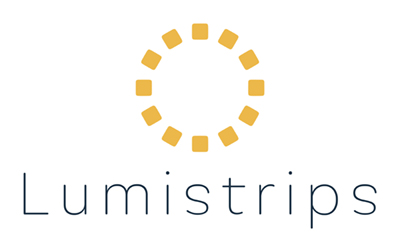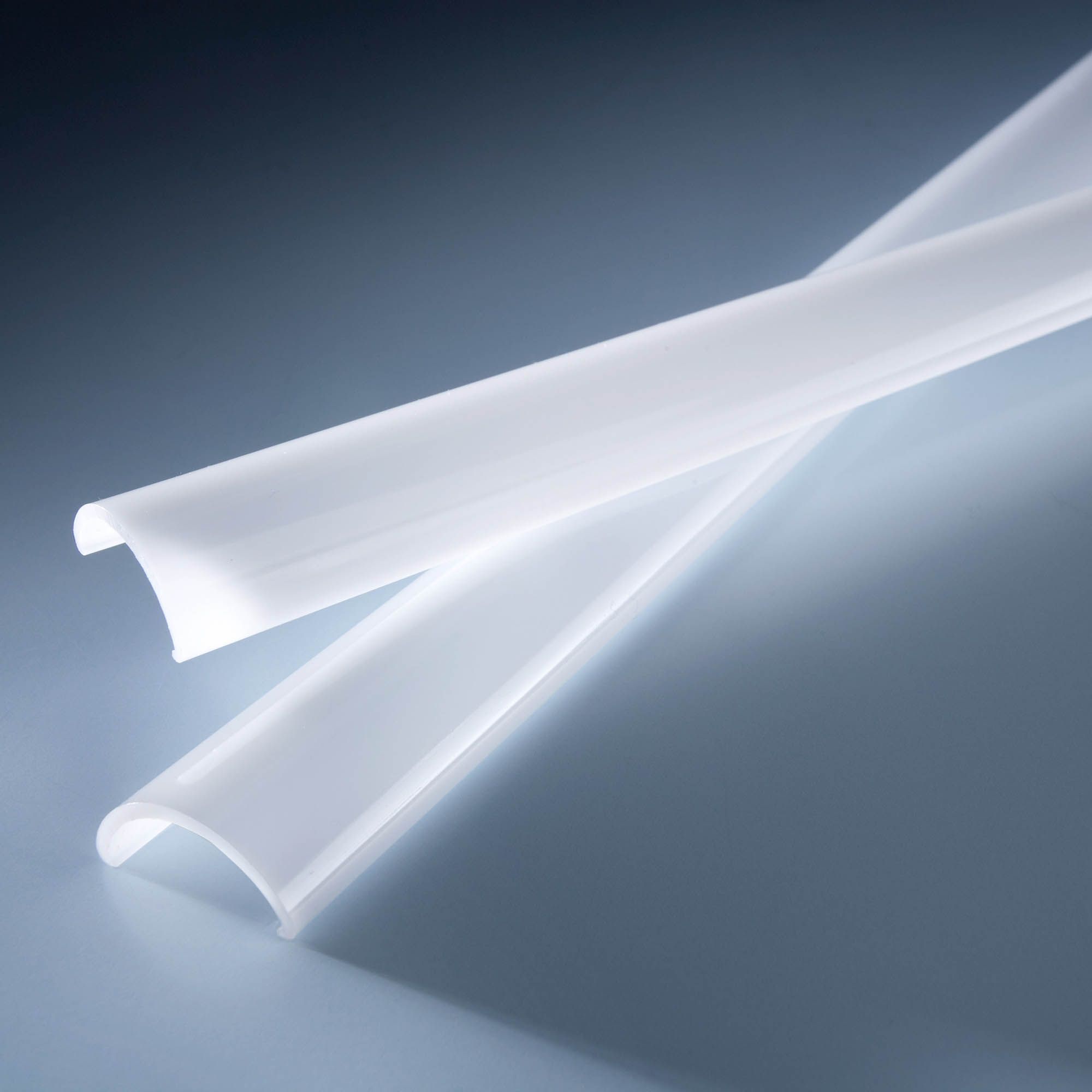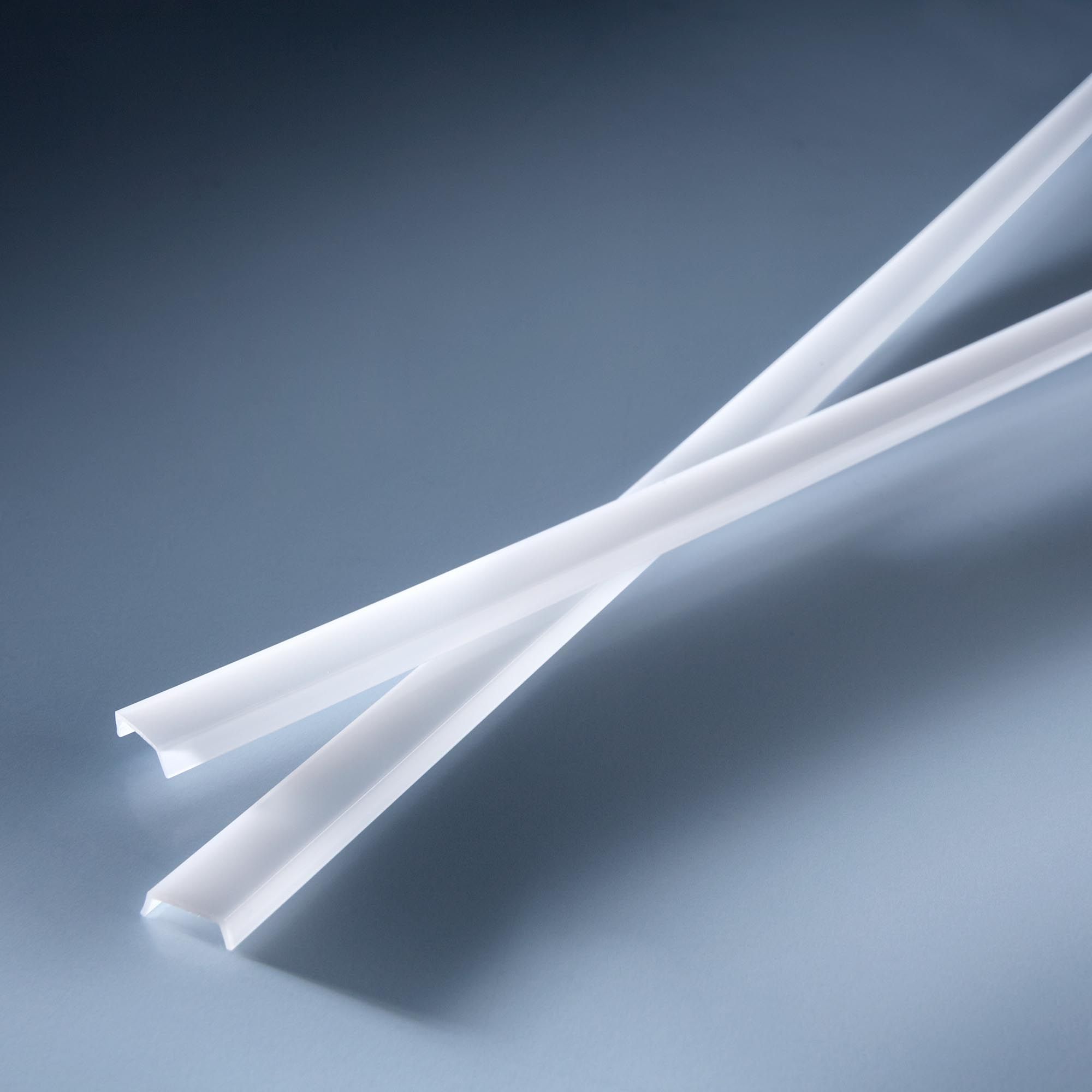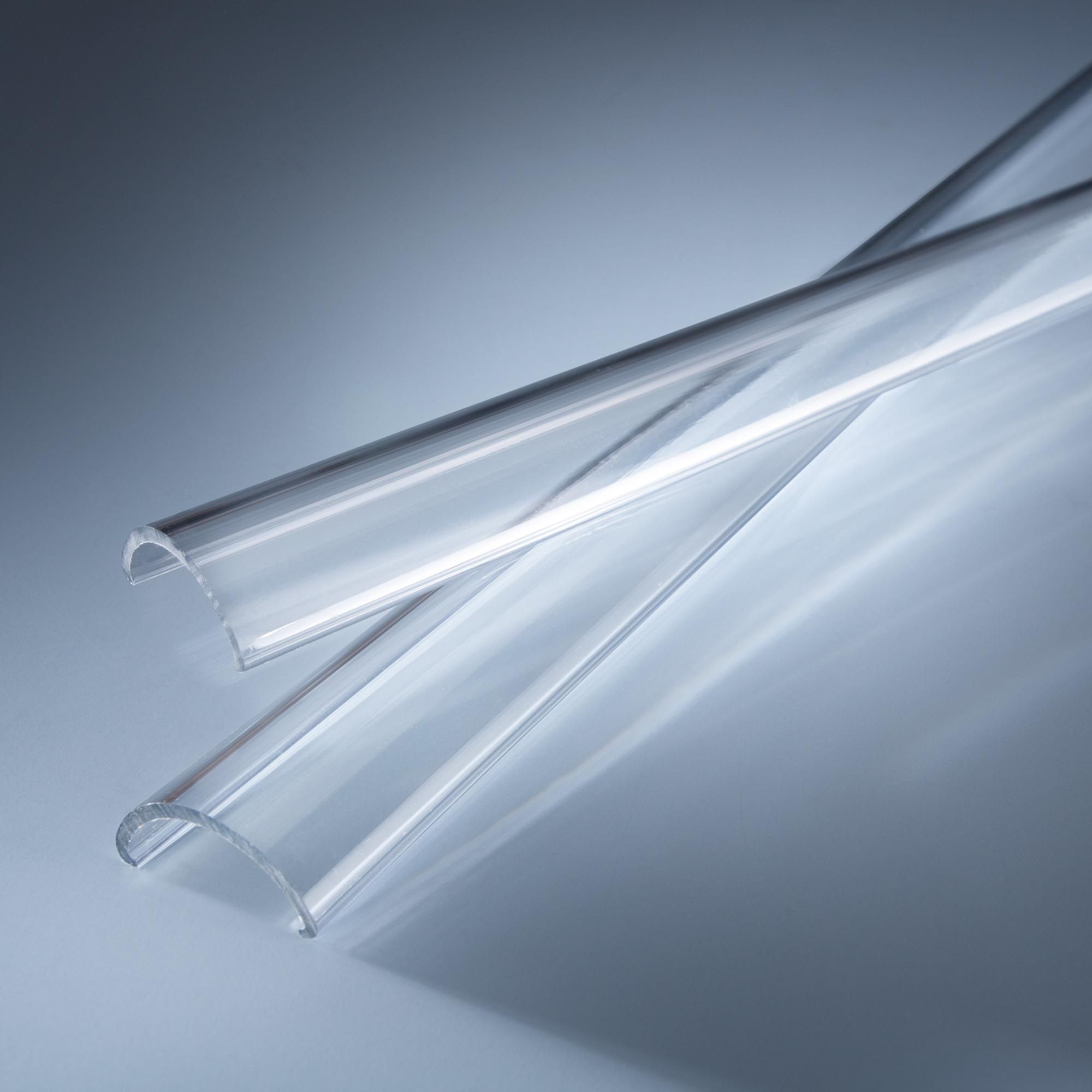Impact of cover on Optical Characteristics of LED strips and linear lights
- By Ledrise Led Professional
- Apr 19, 2022

Linear LED light fixtures and LED tubes also feature a cover that protects the LEDs and diffuses the light. This cover is usually made of polycarbonate (a resin) and sometimes of glass.
The cover has a certain light transmission rate that impacts the light's luminous flux and glare. If a cover has a high transmission rate, it will minimize the depreciation rate of the lamp’s luminous flux by reducing the light diffusion. However, the light of individual LED’s can be visible, increasing the glare effect.
Below, we present an evaluation of four covers to showcase light transmission and glare.
|
|
Cover A |
Cover B |
Cover C |
Cover D |
|
Image |
|
|
|
|
|
Material |
Resin |
Glass |
Resin |
Transparent Resin |
|
Light Transmission Rate(%) |
57 |
67 |
77 |
90 |
For the test a LED strip with the following specifications is used:
|
Item |
Specification |
|
Size |
1,000mm |
|
LED Model |
Nichia 757 |
|
Quantity of LED |
140pcs (LED pitch 7.1mm) |
|
LED Strip Luminous Flux |
2,958lm |
|
LED Strip Voltage |
24V |
|
LED Strip Power |
19.2W |
|
LED Tube Efficacy |
150lm/W |
|
Color Temperature |
5,000K |
|
General Color Rendering Index (Ra) |
80 |
The luminous flux with Covers A, B, C, and D was measured to evaluate their impact. Also, it was evaluated the light diffusion (light evenness through each cover). Each item was measured just after the LEDs were operated to eliminate the thermal impact due to the cover.
|
|
Cover A |
Cover B |
Cover C |
Cover D |
|
|
Lamp’s Luminous Flux(lm) |
2,692 |
2,779 |
2,868 |
2,940 |
|
|
Luminous Flux Depreciation Rate(%) |
9.0 |
6.1 |
3.0 |
<1% |
|
|
Light Diffusion (Unevenness) (LED Pitch 7.1mm) |
|
|
|
|
|
The relation between the transmission rate and the luminous flux depreciation for the non-transparent covers is also be summed up in the below graph:

Based on the evaluation results, the highest luminous flux was obtained with Cover D, followed by Cover C which had the highest light transmission rate from the non-transparent covers. For Cover C, the luminous flux decreased by only 3.0%, but the individual LED’s light are easily noticeable when the LED strip is on.
The luminous flux decrease was highest with Cover, but the individual LEDs are not noticeable, the light being evenly diffused, like a fluorescent lamp.
This shows the relationship between the light transmission rate, luminous flux and light diffusion. For optimal diffusion, a cover with a transmission rate around 55-60% is required. A light diffusion of 75-80% is a good tradeoff, with high luminous flux, acceptable diffusion and greatly reduced glare. Transparent covers maximize luminous flux but also glare.
It should also be mentioned that covers with lower the light transmission rate can cause color shift of the LED light. Using the milky white covers with 55-60% rate, the color could shift slightly toward yellow. Another possible effect of milky white covers is slight decreases in Blue light, without any effect to the General CRI (Ra). When designing a linear light source for mass production, the possible color shift and CRI changes should be considered when choosing the cover.

 Lumistrips UK
Lumistrips UK Lumistrips US
Lumistrips US Lumistrips ES
Lumistrips ES Lumistrips PT
Lumistrips PT Lumistrips ITA
Lumistrips ITA
















